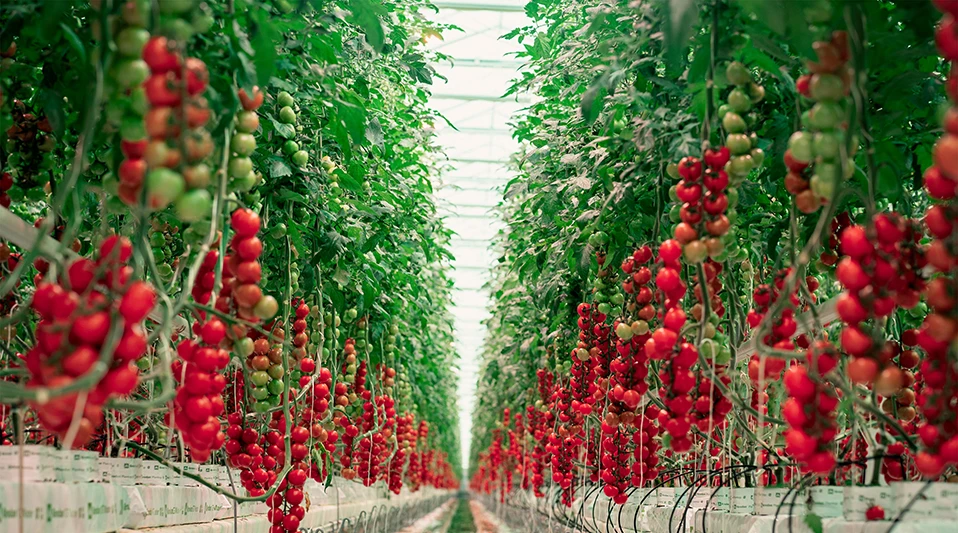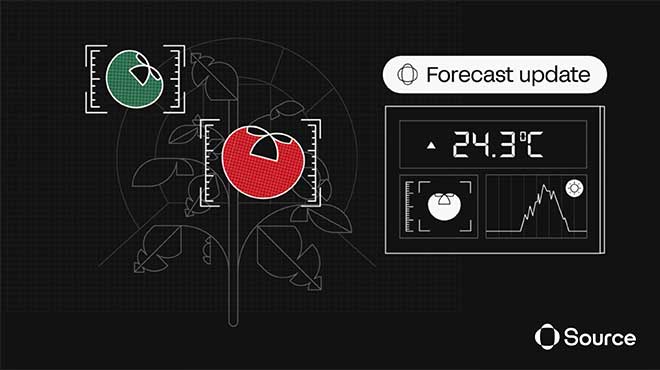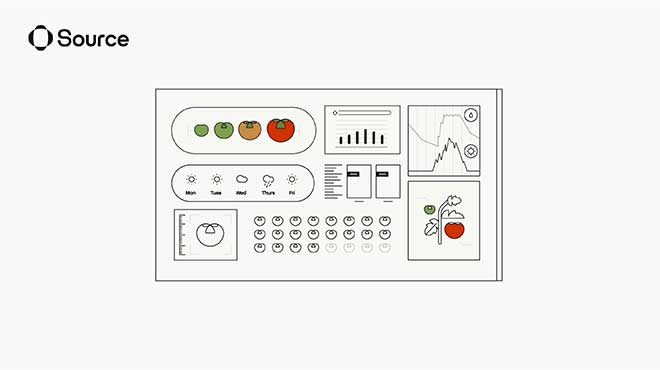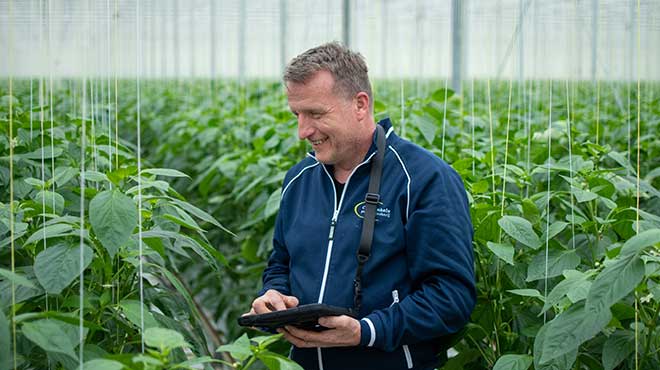
Source.ag
There are five to 10 weeks each year when fresh produce yield can deviate by up to 200% from the original forecast. This forces sales teams at grower companies to trade with fluctuating information.
They pre-sell between 60% to 80% of the vegetable harvest and spot-sell the remaining volume and the surplus, if any. At the same time, retailers purchase from multiple growers, wholesalers and cooperatives to lower the risk of supply shortage. This might seem like a great workaround, but in reality, it creates unfair market conditions for greenhouse growers.
Fresh produce, like tomatoes, keeps shoppers returning to stores often to restock their fridges. This is one of the reasons why vegetables and fruits have a prominent spot at the entrance of many supermarkets. It is also one of the most profitable product groups, comprising a significant part of the retailer’s margin.
These factors require retailers to meet customer demand while eliminating a surplus, since vegetables and fruit are perishable products with quite a short shelf life. Thus, retailers try to secure their fresh produce well ahead of the supply date and at a favorable price.
Due to the struggle of receiving a precise forecast more than one week in advance, sales teams for grower companies only have a few days to find a buyer and agree on a price for extra yield not sold in advance.
Another factor that creates unfair conditions for growers is that retailers contact multiple growers, cooperatives and wholesalers simultaneously. If a supplier is eager to sell first and is willing to accept a lower price because, for example, they’re expecting a big harvest, they effectively set the price for every other supplier.
Fortunately, modern AI solutions like Source Cultivate can help growers receive foresight into yield expectations.
The challenge of accurate yield prediction
High precision in yield forecasting is an incredibly difficult task. Failing to make the right prediction prevents suppliers from securing the best price for their produce. So, is there a way to overcome the challenge?
There are two approaches to yield forecasting. The first is based on the last season’s data. If the grower chooses to grow the same variety, start the season at the same time and follow an identical cultivation strategy, their expectations will prove to be correct. However, as we know, it’s very difficult to control all variables even in a greenhouse.

Source Cultivate consolidates vital data and simulates plant growth and development based on real-time measurements, ensuring accurate forecasts even in changing conditions. Image: Source.ag
On top of that, radiation and other climate factors vary greatly from year to year, with no mitigation in coming years due to climate change and its associated extremes. Many growers will also want to change seed variety, improve cultivation strategy or upgrade their facility year over year. All the above will result in a different yield expectation throughout the harvesting season.
Another way to approach this challenge is for growers to calculate the new fruit set each week on a sample of plants. Then, for each fruit set, they estimate the development time frame and come up with a harvest date. Based on last year’s fruit weight around the same harvest time, the grower can predict what the expected harvest for all fruits on the plant will be.
While more precise, this approach still depends on variables like climate and crop strategy. It doesn’t provide the in-depth information needed to make highly accurate yield predictions. The main challenges include calculation errors, incorrect data and data availability.
Why visibility is key
It takes six to eight weeks for the tomato fruit set to become harvestable. The majority of the development — 90% of the entire development time — happens without noticeable indicators to assess the fruit stage. A tomato might start coloring and ripening only at week seven. It is incredibly hard to say whether a green tomato is at 40% or 60% development. The final fruit weight can also change due to temperature, radiation, CO2, humidity and other factors.

Technology like Source Cultivate can help growers more accurately forecast yields weeks earlier than with traditional tools. Image: Source.ag
Making forecasts four to eight weeks in advance is a tough job. The weight is impacted by the assimilates allocated to each fruit as the result of daily photosynthesis. The distribution of those is driven by the development state of that fruit and its temperature relative to other organs competing for sugars. This process continues for all fruits of all plants in the greenhouse.
Therefore, a precise yield forecast four to eight weeks ahead is currently unattainable with the data and insights available to growers.
This is where technology comes into play.
Leveraging data for increased profit
To help sales representatives negotiate better conditions with retailers, growers need to have foresight into yield expectations. It will result in the prevention of market flushes at times of oversupply or price spikes when all growers have no sufficient supply, thus stabilizing the market and benefiting all parties, including retailers, growers and consumers.

Image: Source.ag
Manual calculations cannot provide the required width and depth for accurate predictions. Thus, technology and science step into approximating the development process through models with the available data.
Modern AI solutions, like Source Cultivate, can simulate the development and growth of each fruit on each measurement plant. It imitates the season based on the grower’s crop plan choices for climate, artificial light and plant management. It also allows for adjusting a strategy to simulate the impact of changes on plant balance and yield.
This enables greenhouse growers to tweak crop plans to maximize results while minimizing risk. By supplementing plant physiology with AI, technology gives growers unprecedented accuracy on yield forecasts of 85 to 90%, up to eight weeks in advance.
To take it even further, you can integrate Source Cultivate with internal systems and keep your teams constantly informed about forecast updates through the Source API. This will provide the required information to secure the best wholesaling deals and plan for packaging, logistics and labor efficiently.
Register for a live demo at Source.ag. Learn more about the solution now!
Latest from Greenhouse Management
- Anthura acquires Bromelia assets from Corn. Bak in Netherlands
- Top 10 stories for National Poinsettia Day
- Langendoen Mechanical hosts open house to showcase new greenhouse build
- Conor Foy joins EHR's national sales team
- Pantone announces its 2026 Color of the Year
- Syngenta granted federal registration for Trefinti nematicide/fungicide in ornamental market
- A legacy of influence
- HILA 2025 video highlights: John Gaydos of Proven Winners





